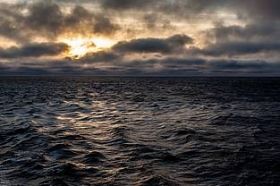A team led by geochemist Dr. Katharina Pahnke from Oldenburg has discovered important evidence that the rise in atmospheric carbon dioxide levels at the end of the last ice age was triggered by changes in the Antarctic Ocean. The researchers from the University of Oldenburg's Institute for Chemistry and Biology of the Marine Environment (ICBM), the Max Planck Institute for Marine Microbiology in Bremen and the Alfred Wegener Institute, Helmholtz Centre for Polar and Marine Research (AWI) were able to demonstrate that the deep South Pacific was strongly stratified during the last ice age, and could thus have facilitated long-term, deep-sea storage of the greenhouse gas carbon dioxide (CO2). The study, which has now been published in the academic journal Science, also indicates that in the course of the warming following the end of the last ice age the mixing of the deep water masses increased, releasing stored CO2 and enhancing global warming.
The Southern Ocean plays an important role in climate events because CO2 can be absorbed from the atmosphere into the ocean. When increased amounts of dust are deposited in the seawater, microscopic algae multiply because the iron contained in the dust acts as a fertilizer. When these single celled algae die, they sink to the ocean floor, taking the sequestered carbon dioxide with them. To ensure long-term removal of the CO2 from the atmosphere, however, it must be stored in stable conditions in deep water over long periods of time.
Continue reading at Alfred Wegener Institute
Image via Mario Hoppmann


